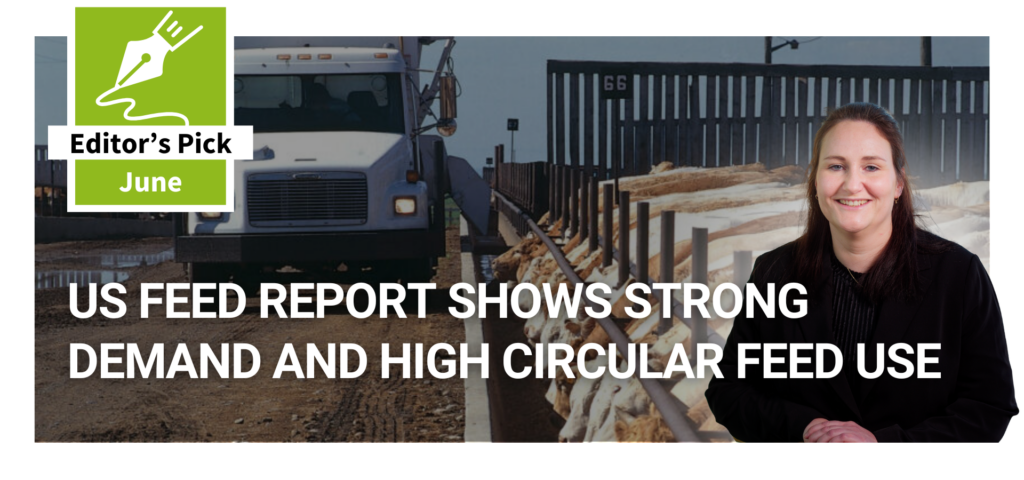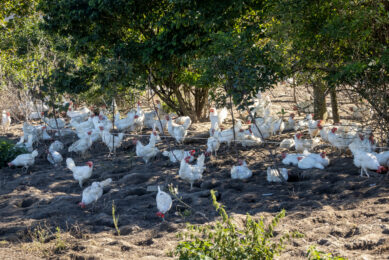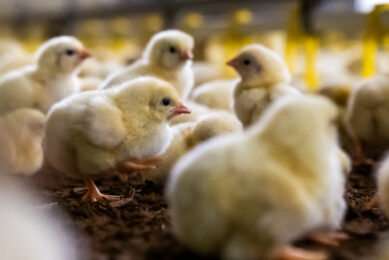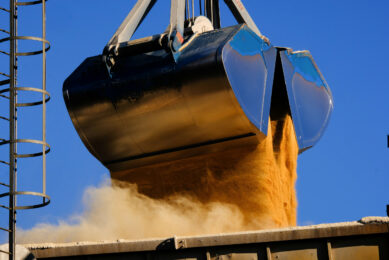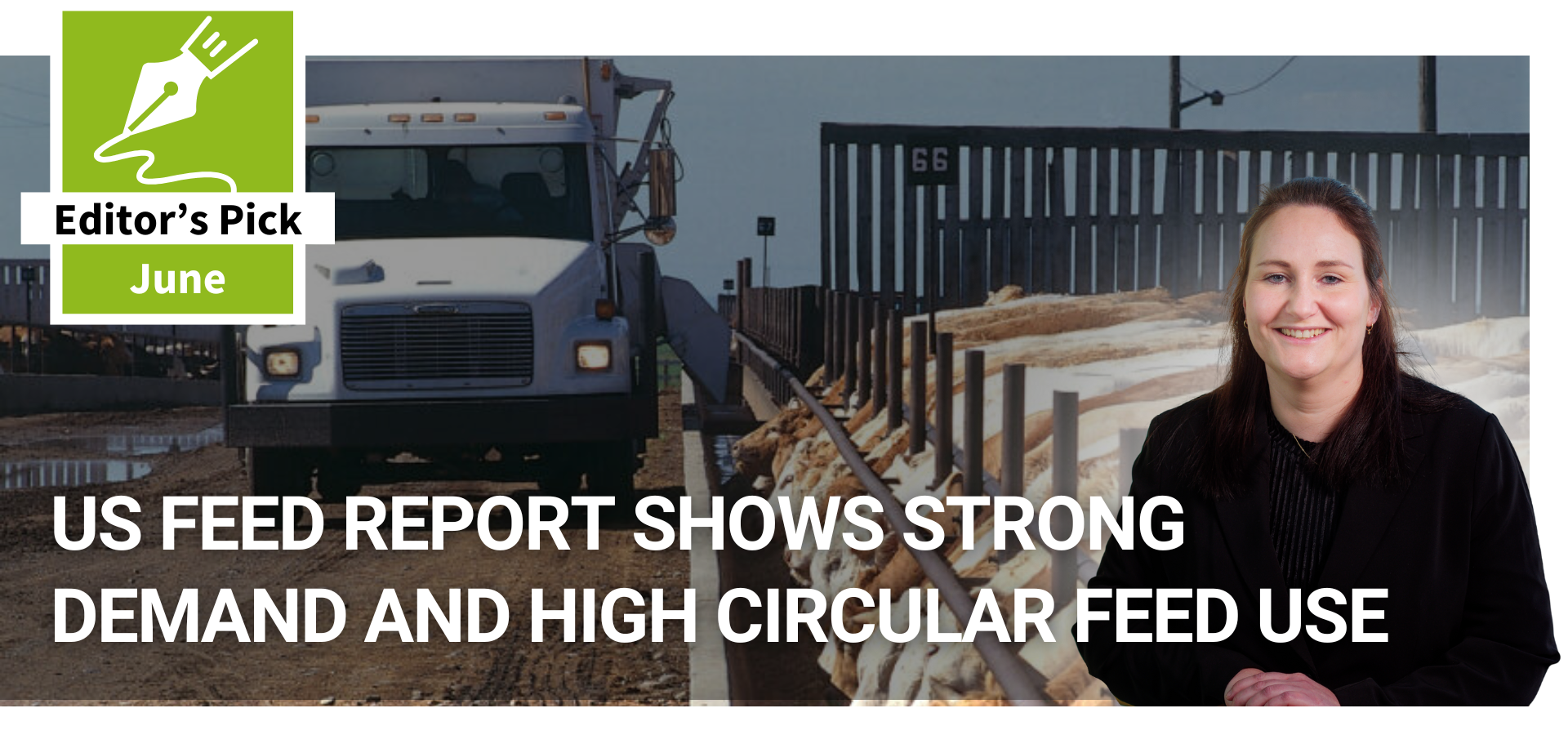Farm report: Feeding fly larvae to layers
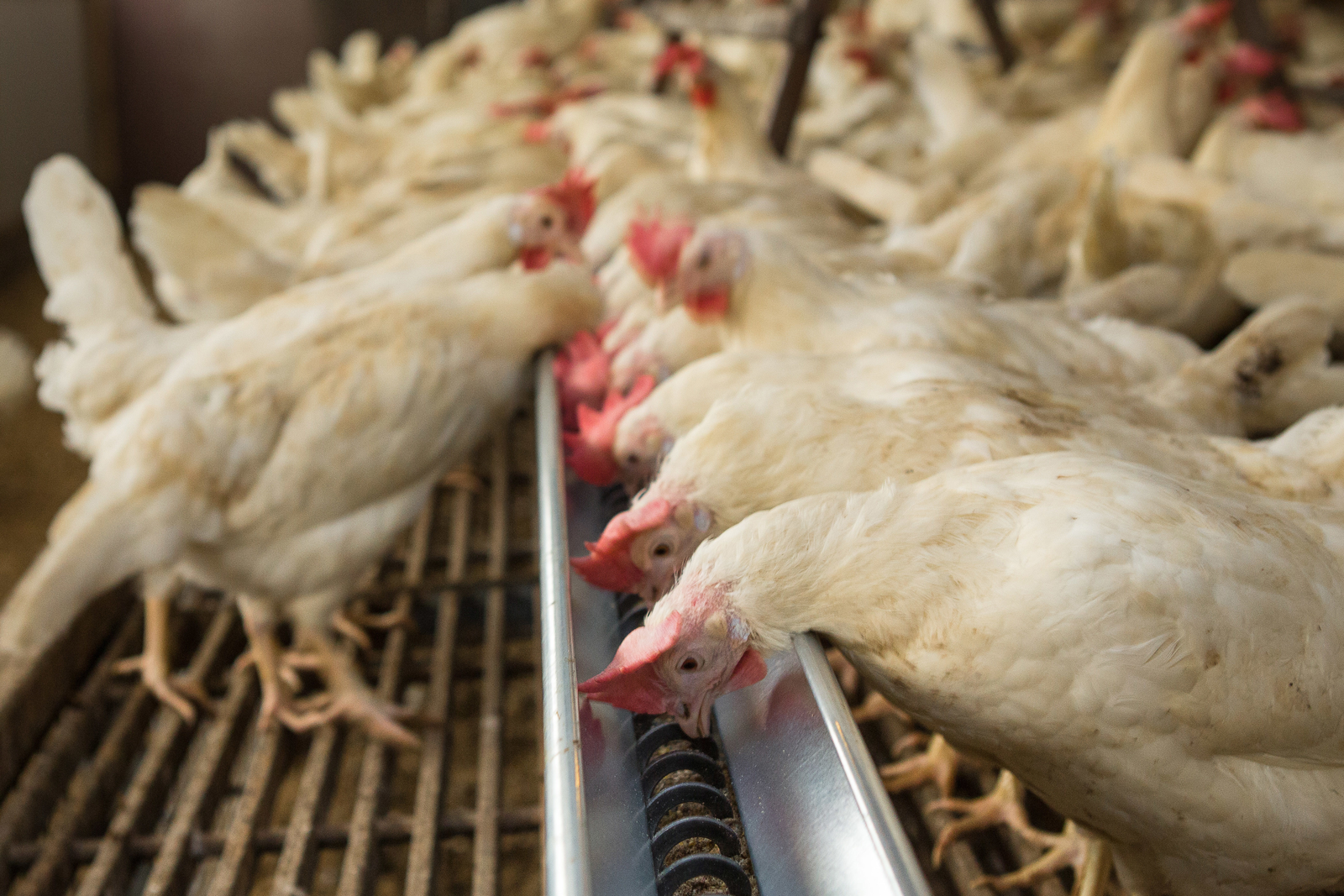
Dutch poultry farmers Léon and Wilco Jansen are running their second test with feeding live fly larvae to a small group of layers. Gaining experience with this alternative to soya is the main objective. Looking for and finding a separate niche sales channel for the eggs is a beautiful and financially attractive bonus.
When Wilco Jansen manually runs the auger feeder in a barn of the 500 laying hens that are being housed separately, the animals immediately become very active. From the free-range section, the hens come directly to the auger feeder and stand, almost as if they were in battle order, ready to pick up the feed. “They are very eager for the feed, more than the hens in our other barns,” said Jansen. The reason is because live larvae are mixed in with the feed. The mixed feed consists of 80% mash feed and 20% larvae of the Black Soldier Fly. The larvae replace all soya, which normally is the protein source in laying rations.
Test group – larvae as feed, laying hens
The idea to feed them live larvae was born about two years ago. “We were looking for alternatives in the poultry sector. We did not want to expand to more animals in order to lower our price. Instead, we looked for a different market sector.” As animal protein sources have been under review for a while, the brothers looked into meal worms and grasshoppers, amongst other things. Eventually, they found their way to insect breeder Protix in Dongen to explore breeding fly larvae. Yet, instead of breeding them, it soon became more logical to use the larvae as feed.
Last year they started a trial involving 200 laying hens. The aim was to gain experience with feeding live larvae. How does that work and how do the chickens react? The brothers have noticed that there are fewer losses among the chickens, especially at the end of the laying period. This additional health and resistance may be due to the larvae, which contain lauric acid and chitin. These substances are said to be antimicrobial. The number of eggs per caged hen is higher, but comparison is tricky. The test group is much smaller than the control group and, though kept in the same barn, they are not held under the same conditions. Yet the initial experiences are such that the brothers want to continue.

But before they set up the second round, they needed to see sales. They found them at Agrimarkt. The supermarket chain has been selling the product under the name ‘het Oerei’ (‘the primordial egg’) in five retail outlets since the end of February. The test group has been updated and scaled up to 500 laying hens. These chickens are fed the special menu that should lead to the special egg.
Fly larvae feed, still a lot of manual work
The 500 laying hens are kept in a separate section with free range space. The larvae are supplied in boxes of five kilos. The maggots are kept in sawdust to prevent them from getting wet and to prevent scalding. The larvae do not smell. As with other fly larvae, their activity decreases when temperature drops. They cannot get out of the bins and when they go into the auger of the feed there is no escape. The chickens don’t give them enough time for that. And if one of them should escape: the fly cannot survive in the Dutch climate.

As indicated, 20% of what the chickens pick up are fly larvae. The bins, containing five kilos of fly larvae each, are delivered one to two times a week, but sometimes Jansen goes to pick the larvae up. The larvae are mixed in with the other 80% of the feed that the chickens are fed. This is a special mash feed from which all soy protein has been left out. The feed is provided by Agrifirm in 25-kilo bags.
The larvae and the mash are manually deposited in a mixer and an auger feeder takes the mixture to the chickens. “In the previous group, the eggs were taken out of the nests by hand. Now we have a conveyer belt under the nests so that the eggs are automatically collected in one central spot. This saves us a little work.”

Profile: Léon (43) and Wilco (42) Jansen.
EKOZ poultry has 99,000 laying hens (Dekalb) and 33,000 hens in rearing. Of the laying hens, 46,000 are pastured. The rest are kept as free-range chickens. They range on 20 ha of grassland. The eggs go to the processor.
And now: Investments, sustainable product
The brothers know that the set up and marketing of the primordial egg cost time and money. Currently, the costs are higher than the proceeds. “The small number of hens make for relatively high costs for feed, larvae and transporting the eggs. You can’t actually drive a long way to deliver a few hundred eggs. But we believe in the vision and so we continue to invest in it. We sell a sustainable product.” Their story has a clearly sustainable ingredient. That’s what will ensure the marketing and up-scaling.
“We replaced soya with larvae that live on plant waste. So no more sourcing protein from all over the world. If the market grows and demand increases, we can quickly scale up. If we scale up, the mash feed can be bought in bulk and we can receive the larvae on a more regular basis. That lowers costs and reduces manual work. Perhaps then we could breed the larvae ourselves. We could use waste from the neighbourhood and thus reduce transport.
Source: World Poultry magazine. Volume 32.5 – 2016



